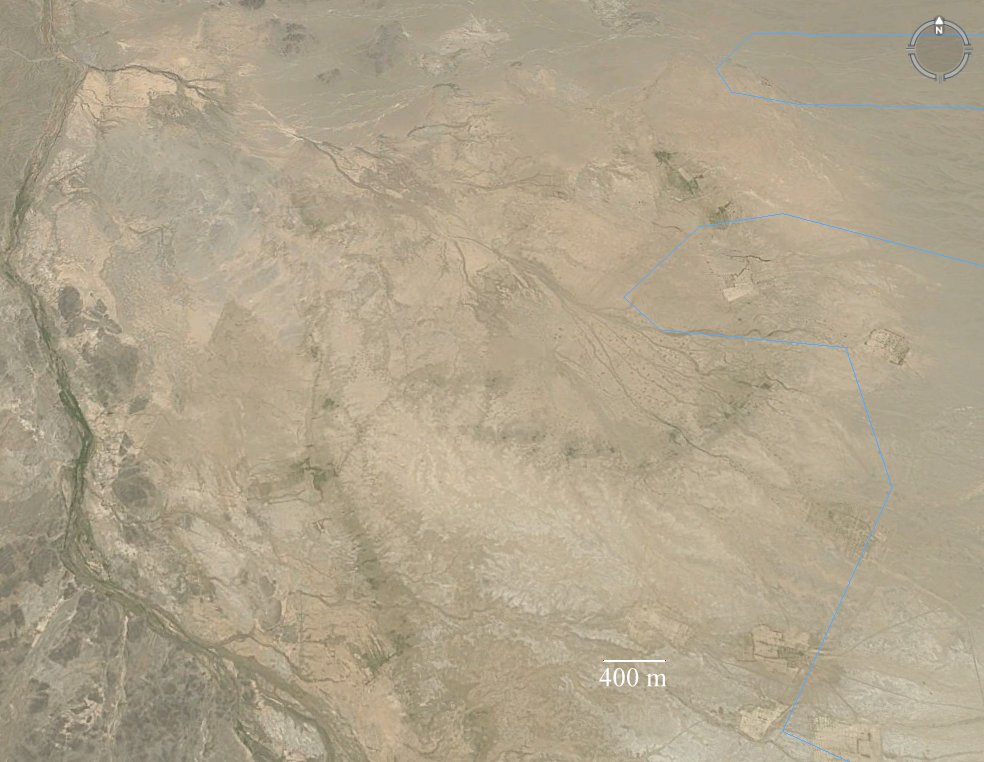- Wikimapia (2017). Zirouki Meteor Crater.
This 3.5 km diameter impact crater was formed around 36 million years ago.
Despite the extensive records on geomorphological studies in Iran, meteorite impact craters have so far not been considered in to account. Based on both remote sensing technique and field work we have recognized the circular structure of Zirouki crater in the Samsour desert, southeast of Iran, which if confirmed as an impact structure, would be the third impact structure candidate in the Middle East after the Wabar craters in Saudia Arabia and Jebel Waqf as Suwwan in Jordan. Geomorphological investigation of the possible impact structure of Zirouki crater was done based on multi criteria methodology including of geological, topographical, geophysical and petrographical studies. Among different studies, topographical investigation indicated that the crater shape morphology was quite obvious with a central uplift projection; as well geophysical pattern provided very strong evidence for possible impact structure, indicating the presence of circular negative gravity anomaly at the whole of the crater.

Спутниковая фотография кратера из Google Earth.
На главную

